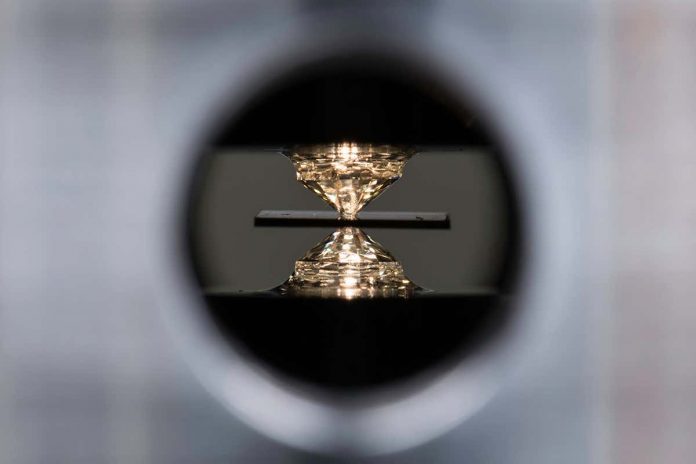[ad_1]

Adam Fenster
Room temperature superconductivity has been a buzzword in materials science for decades, but now it may finally be a reality, with the potential to revolutionise the way we use electricity.
An enormous amount of the energy we produce is wasted because of electrical resistance, which generates heat. But in a superconducting material, electrical current can flow with zero resistance, meaning these losses don’t occur.
This property has made such materials extraordinarily sought-after, but until now getting them to work has required very low temperatures and extremely high pressures.
Advertisement
“If you had a room-temperature superconductor that you could deploy at atmospheric pressure, you could imagine a whole host of large-scale applications,” says M. Brian Maple at the University of California, San Diego. “I’m just afraid that the materials science could be so difficult that you might not be able to get a superconductor that could perform well enough for those applications.”
Now, Ranga Dias at the University of Rochester, New York, and his colleagues have solved half of this problem. The team made a superconductor by crushing carbon, sulphur and hydrogen between two diamonds at a pressure about 70 per cent of that found at the centre of Earth and at a temperature of around 15°C. That is the highest temperature at which superconductivity has ever been measured, and the first that can reasonably be called room temperature.
Solid metallic hydrogen on its own is expected to be superconductive, but it is incredibly difficult to make because it requires extraordinary pressure. The researchers found that adding carbon and sulphur to the hydrogen makes it behave as if it is at a higher pressure than it really is.
“Say you are in a room and you have four walls, one way you can compress yourself is to bring the walls closer and closer, but you can also keep the same size of room and add 10 people into the room, you’ll still feel squeezed,” says Dias. In this experiment, adding carbon and sulphur to the hydrogen is like adding more people to the room: it acts to chemically pre-compress the hydrogen.
Once Dias and his team found that the electrical resistance of their material went to zero at 15°C, they performed several other tests to confirm that it really was superconductive, such as making sure that it blocked magnetic fields. “These are very thorough experiments, they basically nailed it down – when you look at the data, it’s stunning to see,” says Shanti Deemyad at the University of Utah. “This is going to shake the field.”
Questions still remain, though. For example, despite knowing that the superconducting material is made of carbon, sulphur and hydrogen, we don’t know how those elements are bonded together. “It’s not uncommon in this type of research to have an experiment without knowing the structure,” says Eva Zurek at the State University of New York at Buffalo. More theoretical work will be needed to match the material’s behaviour with models of various compounds and figure out what exactly it is, she says.
Dias and his colleagues are now working to produce their material at lower pressures. “Take diamond: it is a high-pressure form of carbon, but nowadays you can grow it in a lab with chemical deposition techniques,” says Dias. “It used to require high pressure, but now we can grow it – we may be able to do something similar with superconductors.”
The fact that this compound has three different elements in it, whereas other superconductors have tended to only contain one or two, makes it more adjustable, which Dias says will help in the effort to make it work at lower pressures.
If that can be achieved, this material could be used in applications ranging from quantum computing to building better MRI machines to drastically reducing energy waste from electricity transmission. “If we could make superconducting wires that we didn’t have to cool, we could in principle replace the whole power grid,” says Zurek. “That would be a real revolution.”
Journal reference: Nature, DOI: 10.1038/s41586-020-2801-z
More on these topics:
[ad_2]
Source link











